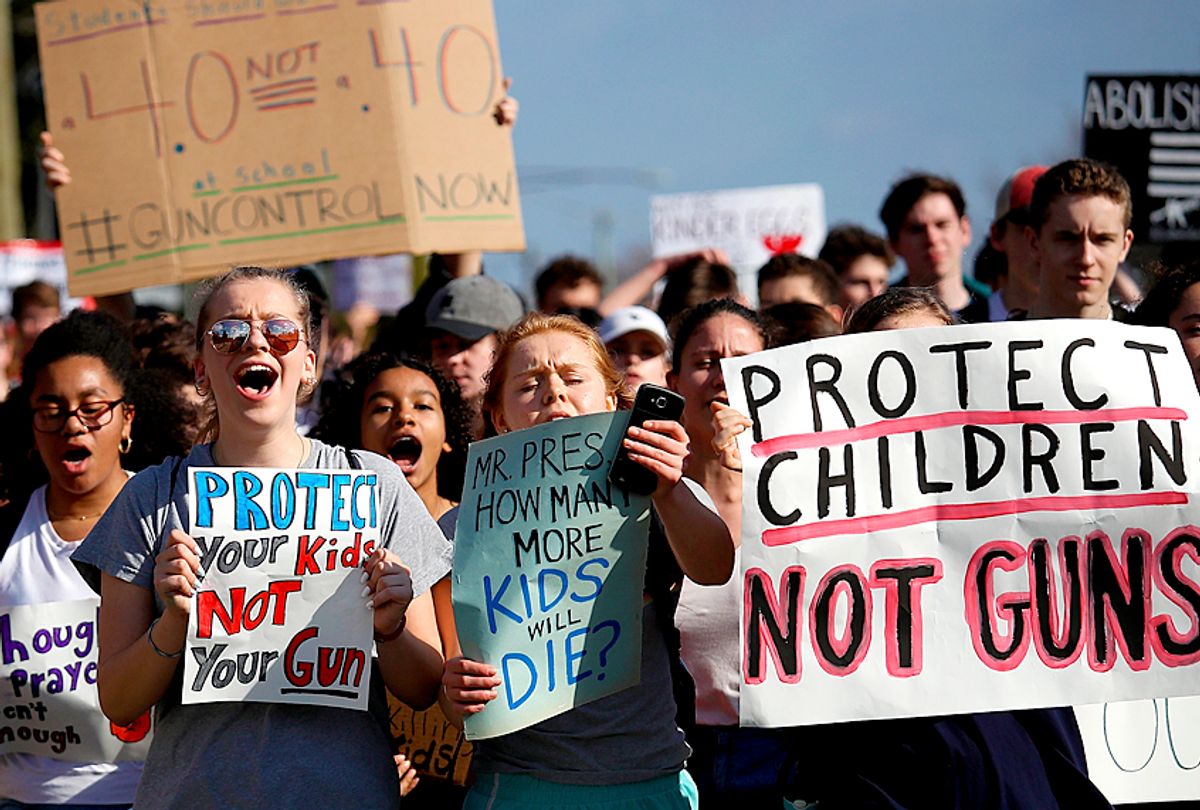 Teachers in West Virginia demonstrated the power of a huge strike last week. What if students used the same strategy to force politicians to act on gun control?
Teachers in West Virginia demonstrated the power of a huge strike last week. What if students used the same strategy to force politicians to act on gun control?
In the latest episode of the Have You Heard podcast, AlterNet education contributor Jennifer Berkshire and co-host Jack Schneider talk to historian Jon Zimmerman about the power of student strikes to force political change. Zimmerman argues that strikes and walkouts, often led by students of color, have proven to be a uniquely powerful tool. Also featured: student organizers from suburban and urban schools who are organizing walkouts to demand action on gun violence.
The following is an edited transcript. Listen to the entire episode.
Have You Heard: You argue that a nationwide strike by students could force politicians to act on gun control. Why a strike?
Jon Zimmerman: Well frankly, I think that nothing else has worked. The adults have proven that they can’t protect our children from the scourge of school shootings. Only the children can do that, and only if they take action on their own. If you look at the history of student strikes, they've often forced school districts to institute important changes. I understand that Congress is not a school district. I understand that the burden here, the challenge, is much, much greater. But I do think it would be useful for all of us, including the students, to remind ourselves that direct action in the past has worked. For those of us who are tired of reading the same headlines and listening to the same vapid responses about thoughts and prayers, I think we have to start considering other options.
HYH: When you look at strikes by previous generations of students, what were some of the ingredients that made them effective?
JZ: The first and most important one is the students discussing a matter that affects them directly, intimately, and personally. You and I aren’t targeted by school shootings. We don't go to school. They do. In the 1960s, there was a whole set of student protests in faraway places, including El Paso, Texas, about strict dress codes that affected students and no one else. There was a widespread strike led by a boy who had long hair and refused to cut it. Eventually you saw school districts across the country start to relax those rules on hair length.
Now, hair length is not gun control, obviously. Gun control is a state and especially a federal matter, and there are important and powerful lobbies that are involved in it. But I do think that there's a long history to draw from, and I think creative people should do that.
HYH: This week marked the 50th anniversary of the East LA Blowouts, mass walkouts by Chicano students. What’s fascinating about these protests is not just how effective they seem to have been, but that they’ve been all but erased from history.
JZ: In 1968 in East Los Angeles, there was a major strike, we think at least 20,000 kids, mostly Chicano — that is, Mexican American — who were demanding that the schools address their own experience in the curriculum, and an end to the ban on speaking Spanish in school. We forget that in American public schools in the South and Southwest, where Chicanos were concentrated, it was actually against the rules to speak Spanish at all except in Spanish class. That’s an example from the Civil Rights era, but there are more recent examples, too, like when students in suburban Jefferson County walked out of school to condemn a school board resolution instructing history courses to emphasize patriotism over civil disorder. That strike, by the way, led to the recall of three board members, including the author of the resolution.



Shares